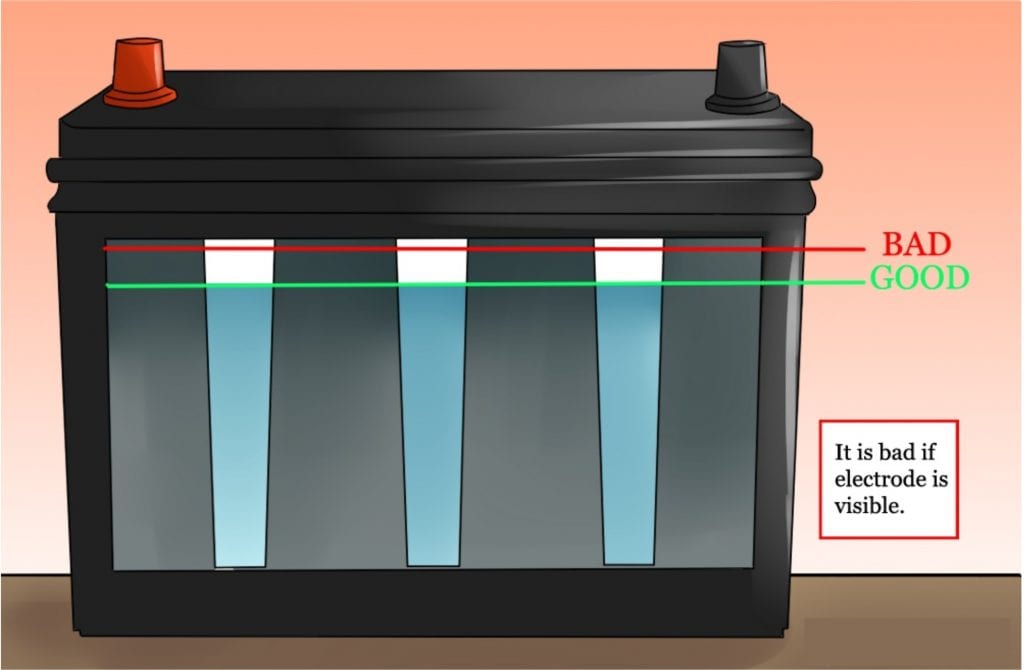PREVENTATIVE MAINTENANCE

Inspection
Examine the outside appearance of the battery. The tops of the batteries and terminal connections should be clean, free of dirt and corrosion, and dry. Refer to Cleaning section 3.3.
If fluids are on the top of a deep-cycle flooded/wet battery this may mean that the battery is being over-watered or overcharged. Refer to Watering section 3.2 for the proper watering procedure. If fluid is on the top of a deep-cycle AGM or gel battery this means that the battery is being overcharged and the performance and life will be reduced.
Check battery cables and connections. Replace any damaged cables. Tighten any loose connections. Refer to Torque Values section 2.2.2.
Watering (deep-cycle flooded/wet batteries only)
Water should never be added to deep-cycle AGM or gel batteries, as they do not lose water during use. Deep-cycle flooded/wet batteries need to be watered periodically. The frequency depends upon battery usage and operating temperatures. Check new batteries every few weeks to determine the watering frequency for your application. It is normal for batteries to need more watering as they age.
Fully charge the batteries prior to adding water. Only add water to discharged or partially charged batteries if the plates are exposed. In this case, add just enough water to cover the plates and then charge the batteries and continue with the watering procedure below.
Remove the vent caps and place them upside down so that dirt does not get on the underside of the cap or for Plus Series™ batteries, simply flip open the cap. Check the electrolyte level.
If the electrolyte level is well above the plates then it is not necessary to add more water.
If the electrolyte level is barely covering the plates, add distilled or de-ionized water to a level 1/8” (3 mm) below the vent well (this is the plastic shield inside the vent hole) for standard batteries and to the maximum (MAX) level indicator for Plus Series™ batteries.
After adding water, secure vent caps back on batteries.
Tap water may be used if the levels of impurities are within acceptable limits. Refer to Table 3 for Water Impurity Limits.
Cleaning
Observe the battery for cleanliness at regular intervals and keep terminals and connectors free of corrosion. Terminal corrosion may adversely affect the performance of the battery, and it could present a safety hazard.
Check that all vent caps are secured properly on the battery.
Clean the top of the battery, terminals and connections with a cloth or brush and a solution of baking soda and water (1 cup of baking soda to 1 gallon of water). Do not allow cleaning solution to get inside the battery.
Rinse with water and dry with a clean cloth.
Apply a thin coat of terminal protector spray that can be purchased through your local battery dealer.
Keep the area around batteries clean and dry.
Charging
Proper charging is imperative to maximize battery performance. Both under- or over-charging batteries can significantly reduce the life of the battery. For proper charging, refer to the instructions that came with your equipment. Most chargers are automatic and pre-programmed. Some chargers allow the user to set the voltage and current values. Refer to Table 4 for charging guidelines. Refer deep-cycle gel charging guidelines.
Make sure the charger is set to the appropriate program for deep-cycle flooded/wet, AGM or gel, depending on the type of battery you are charging.
Batteries should be fully charged after each use.
Lead-acid batteries (deep-cycle flooded/wet, AGM or gel) do not have a memory effect and
Check electrolyte level to make sure plates are covered with water before charging (deep-cycle flooded/wet batteries only). Refer to section 3.2.
Check that all vent caps are secured properly on the battery before charging.
Deep-cycle flooded/wet batteries will gas (bubble) towards the end of charge to ensure the electrolyte is properly mixed.
Never charge a frozen battery.
Avoid charging at temperatures above 120ÆF (49ÆC).
Storage
Charge batteries before placing in storage.
Store in a cool, dry location, protected from the elements.
Disconnect from equipment to eliminate potential parasitic loads that may discharge the battery.
Batteries gradually self-discharge during storage. Monitor the specific gravity or voltage every 4-6 weeks. Stored batteries should be given a boost charge when they are at 70% state of charge (SOC) or less. Refer to Table 7 for specific gravity and voltage measurements.
When batteries are taken out of storage, recharge before use.
Storage in Hot Environments (greater than 90°F or 32°C)
Avoid direct exposure to heat sources, if possible, during storage. Batteries self-discharge faster in high temperatures. If batteries are stored during hot, summer months, monitor the specific gravity or voltage more frequently (approximately every 2-4 weeks).
Storage in Cold Environments (less than 32°F or 0°C)
Avoid locations where freezing temperatures are expected, if possible, during storage. Batteries can freeze in cold temperatures if they are not fully charged. If batteries are stored during cold, winter months, it is critical that they are kept fully charged.
5 How to Maximize the Performance of your Trojan Battery
Follow all the procedures in this User’s Guide for proper installation, maintenance and storage.
Do not discharge your battery more than 80%.
If you have any questions or concerns about battery care, please contact Trojan Battery Company’s technical support engineers at 800-423-6569 Ext. 3045 or +1-562-236-3045 before a problem develops.
